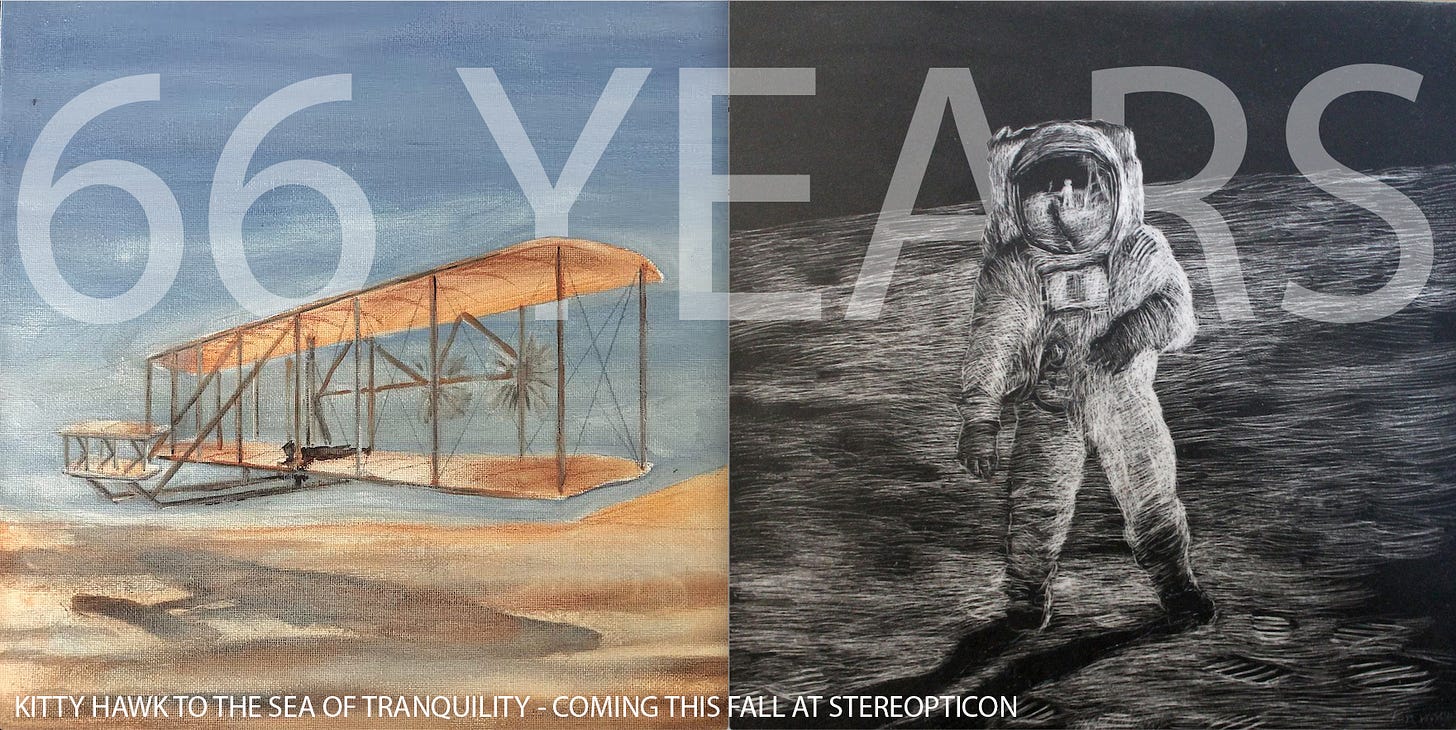i. IT WAS ALWAYS ALL ABOUT WEIGHT
Here Begins My Series on the Evolution of Manned Exploration into the Heavens
It was always all about weight. It was a dream of Daedalus (Daidalos or Δαίδαλος in Greek), and Icarus (Ikaros or Ικαρος in Greek). Though it is but a myth, it was long an aspiration of humanity — to escape the confines of earth and soar into the realm of birds and beyond. Leonardo drew pictures of flying machines. In the mid-nineteenth century, Karl Wilhelm Otto Lilienthal built gliders. The Wright Brothers were not alone in their quest to break free from the earth, there was Smithsonian Institution Secretary Samuel Langley, who was launching his prototype biplane from an enormous floating platform in the Potomac River — with substantial funding from the United States Army. In France, Louis Charles Joseph Blériot had made a substantial amount of money by developing an automobile headlight. He used the money to finance his attempt to build a workable aeroplane. It was the development of a light engine that made the possibility even closer. On December 17, 1903, Orville Wright and Wilbur Wright demonstrated the first successful flight by a heavier-than-air machine. It took them another year or so to perfect it. They had begun by studying Lilienthal’s work. They found his equations were not quite right, but built on them. Glenn Hammond Curtiss would pick up on Langley’s work, developing a practical aeroplane. Blériot would perfect his aeroplane and fly it solo across the English Channel in 1909.
Otto Lilienthal’s Glider. — Reconstruction
Louis Blériot’s monoplane used wing warping to control its flight. — Public Domain
John Stringfellow and William Samuel Henson’s Aerial Transit Company was depicted in fanciful renderings such as this. — Public Domain
John Stringfellow and William Samuel Henson had actually built a successful steam powered model prototype of an aeroplane in 1851. It was unmanned and had a ten foot wingspan. Their attempts to build a larger model capable of carrying a person were unsuccessful (weight again), but the two pioneers envisioned an Aerial Transit Company, and promoted their design with posters such as the one above, showing their craft flying above wonders like the pyramids.
If the truth be known, there were many people pursuing the dream of manned flight along with, as well as before the Wrights. What follows is the story of one of them:
James Henry Gatling and His Aeroplane
In 1873, thirty years before the Wright Brothers successfully flew their first airplane, a hog farmer and winemaker in Hertford County, North Carolina named James Henry Gatling launched his prototype Aeroplane from a barn roof; flying it 100 feet before it crashed. Like Cyrus McCormick, who is credited with the invention of the mechanical reaper, James was raised by a father who was an inventor and a tinkerer. Jordan Gatling was a self-taught blacksmith and carpenter as well as being a farmer himself. He taught his sons the trades that he had mastered.
James’ brother, Richard Jordan Gatling, would become famous, for it was he who invented the Gatling Gun. James, on the other hand, was fascinated by birds. He built kites and dreamed about the possibilities of flight. Once he even jumped off of the barn roof with an umbrella. He correctly surmised that flying was all about weight, so he engineered his craft using lightweight ribs fashioned from poplar and oak. The craft was powered by a hand crank that drove twin propellers. He assumed that once momentum was established, his cranking would be enough to sustain flight.
His craft was controlled with a front elevator and a vertical rudder, controlled by levers Gatling would operate from his ‘cockpit,’ which was actually a kitchen chair. The craft was eighteen feet long with a wingspan that was a mere fourteen feet! That was clearly insufficient to provide the lift needed for sustained flight. But on a Sunday afternoon in 1873, Gatling’s farmhands pushed him in his craft off of the roof.
He managed to fly the plane 100 feet – right into an elm tree. He broke a leg in the crash and never repaired the aeroplane. James Gatling was tragically murdered in 1879 and his aeroplane was destroyed by a fire in 1905. Still, his efforts remained legend in Murfreesboro and Hertford County – even being recognized on a historical marker as a part of local lore. Many considered it a legend, but around 1966 it was found to be a documented truth. Students at the local community college even built a replica of the flying machine.
Gatling was 63 years old when he died. Had he lived, might he have returned to his project — adding wingspan and an engine? — and the history of manned flight could have been very different.
COMING THIS FALL AT STEREOPTICON
Kitty Hawk to the Sea of Tranquility, The Journey, Coming this Fall. — Bob Kirchman









